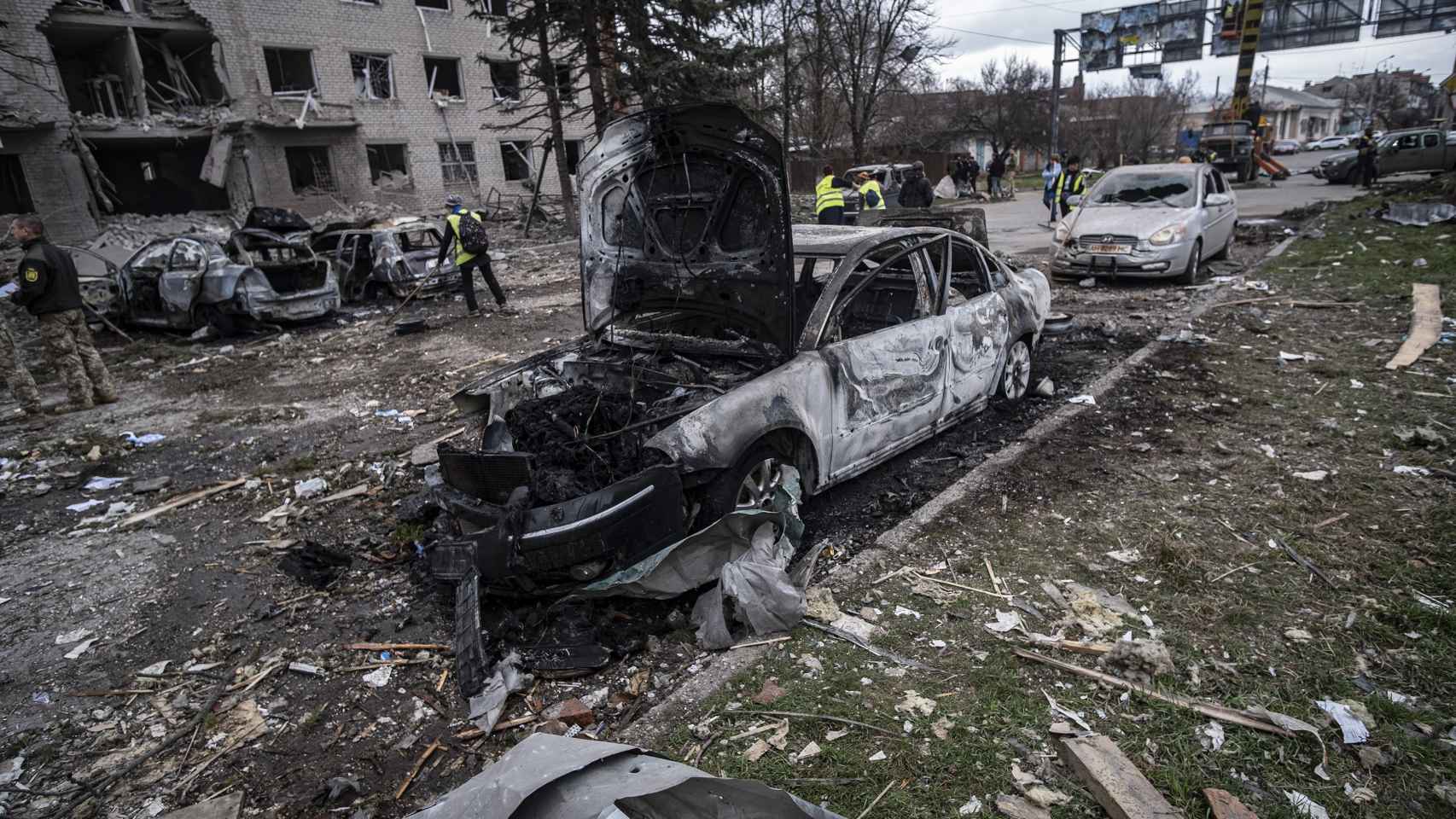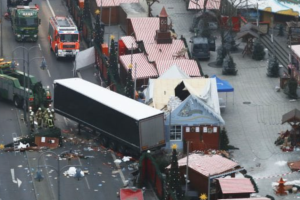At 10:40 a.m. Monday, two Russian S-300 missiles sparked panic in Sloviansk – one of the last remaining Ukrainian-held bastions in Donbas – by hitting the city’s Recruitment Center, bursting it open and reducing an entire block to rubble.
As a result, two dead and 32 injuredalong with an apocalyptic image in which cars engulfed in flames could be seen and people trying to get out of the rubble of the building – with bloody faces – while firefighters and the Army rushed to help.
In one of the few cars that were not burned, blood was seen dripping under the driver’s door, to the astonishment of residents who came to the scene to check if their relatives were okay.
The street where the Sloviansk Recruitment Center was located, Monday morning, after the Russian bombardment with S-300 missiles reduced several buildings to rubble.
[De Jersón a Noruega: así huyeron los discapacitados Bohdan y Oleksandr tras ser deportados a Rusia]
“I come running from work to see how my mother islives in the building across the street”, Natasha explained, visibly affected with the image before her eyes. “She doesn’t want to leave Sloviansk, and I can’t leave her, but we live in fear. When will this end? What do they want from Ukraine? What have we done?” she wondered aloud.
a young man named Alexander, with facial injuries and dusty clothing, also approached the charred vehicles. “I was inside the Recruitment Center at the time of the attack, I was enlisting,” she recounted. “That car was mine… but the important thing is that I’m alive, the car was just a piece of metal, I can buy another one,” she added.
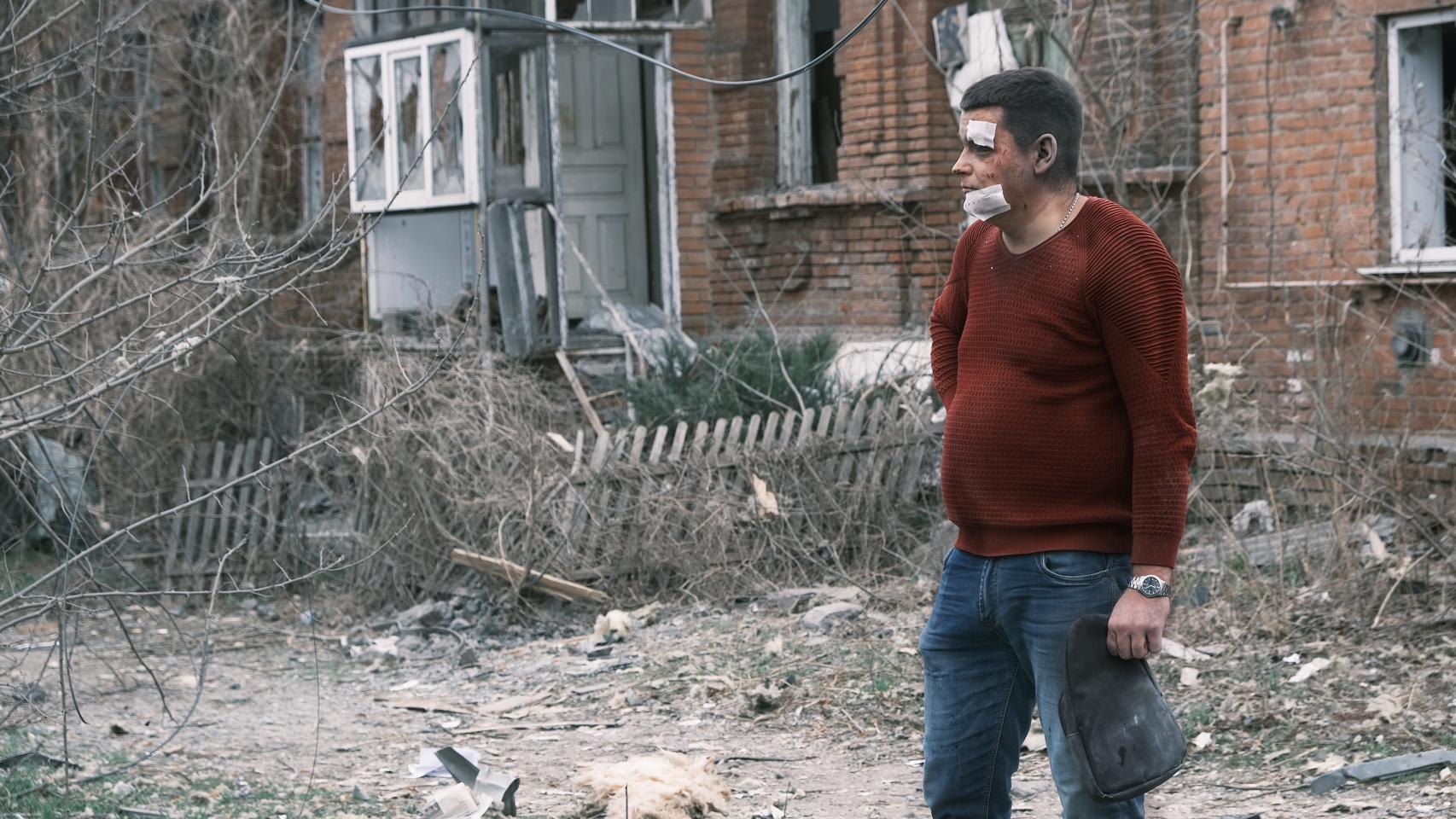
Alexander, one of those wounded during the attack on the Sloviansk Recruitment Center. At the time of impact, he was inside the offices, enlisting in the Ukrainian Army.
Ambulances took away most of the injured in the first minuteswhile several emergency personnel cured on site to those who were not serious. At the same time, a large group of investigators –police and military– collected evidence and photographed every detail of the place.
war crimes
Among the evidences, which they scrupulously documented, were the metallic remains of the two S-300 missiles launched by Russia. Some fragments were carefully placed in evidence bags, along with other remains of the explosion.
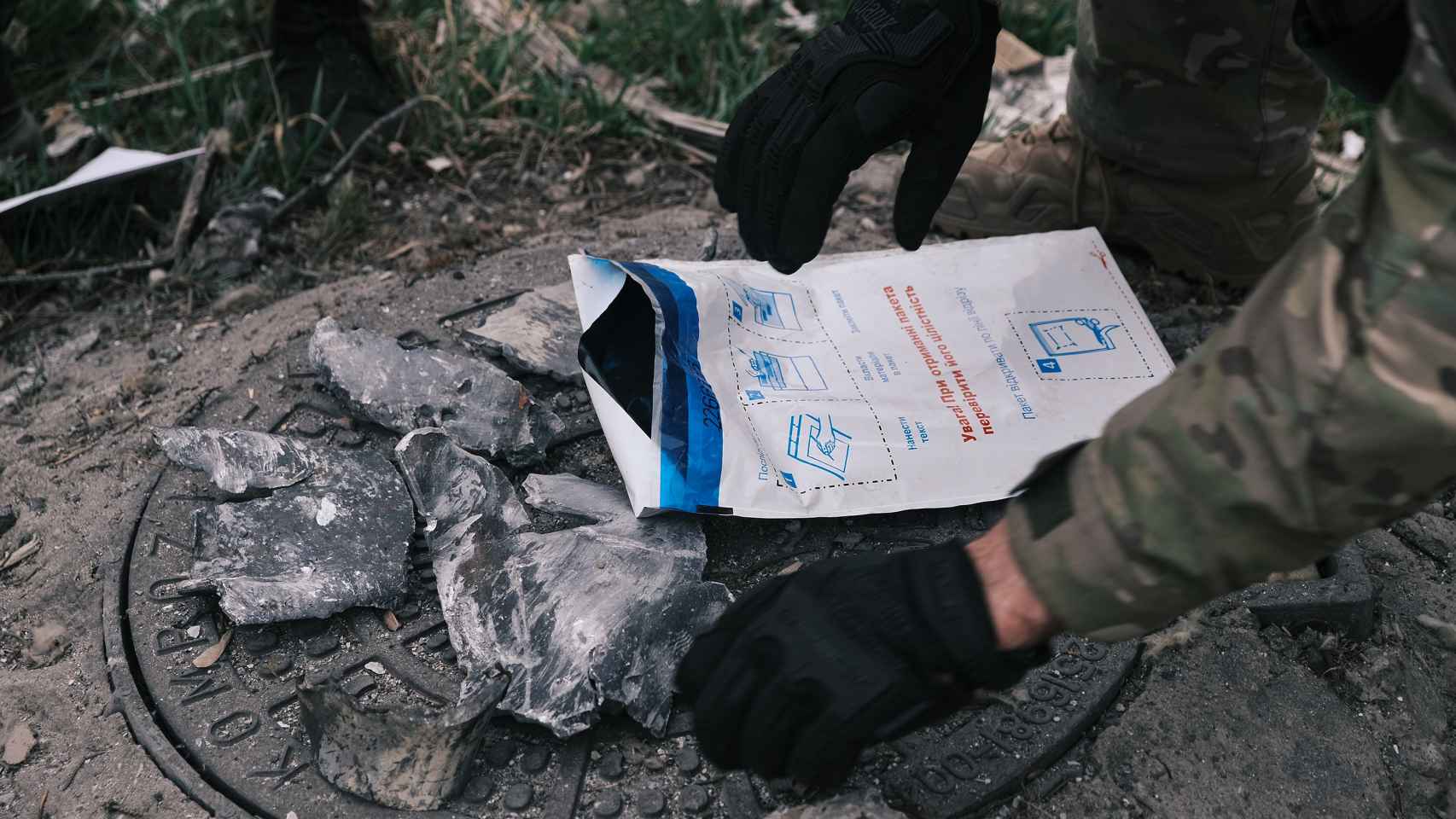
A researcher classifies the remains of the two S-300 missiles that the Russian Army fired at the Sloviansk Recruitment Center.
In just two hours, the researchers combed the entire block. “War crimes will be paid”assured one of the military policemen, who acknowledged that each and every one of the Russian bombings of Ukrainian cities since the beginning of the war is being investigated.
Once the investigations were over, an army of volunteer women began to remove the rubble, glass and remains of trees scattered all over the street. As the ambulances withdrew, several bulldozers also arrived to continue the cleanup.
[La ONU acusa a Rusia de crímenes de guerra y ejecuciones sumarias en su informe sobre Ucrania]
At the end of the morning, an important part of the remains of the explosion had already been removed, something a priori surprising, but which is usual in Ukraine: as soon as the attack is over, the repairs begin. However, the scars on the buildings – some of which will have to be demolished – could not be fixed so quickly.
The bombing of the Recruitment Center has been the bloodiest attack what has occurred in recent months in the city of Sloviansk. With the Russian Army concentrating all its war efforts on the fighting fronts of Bakhmut, Avdiivka and Vuhledar, the rear cities were relatively quiet.
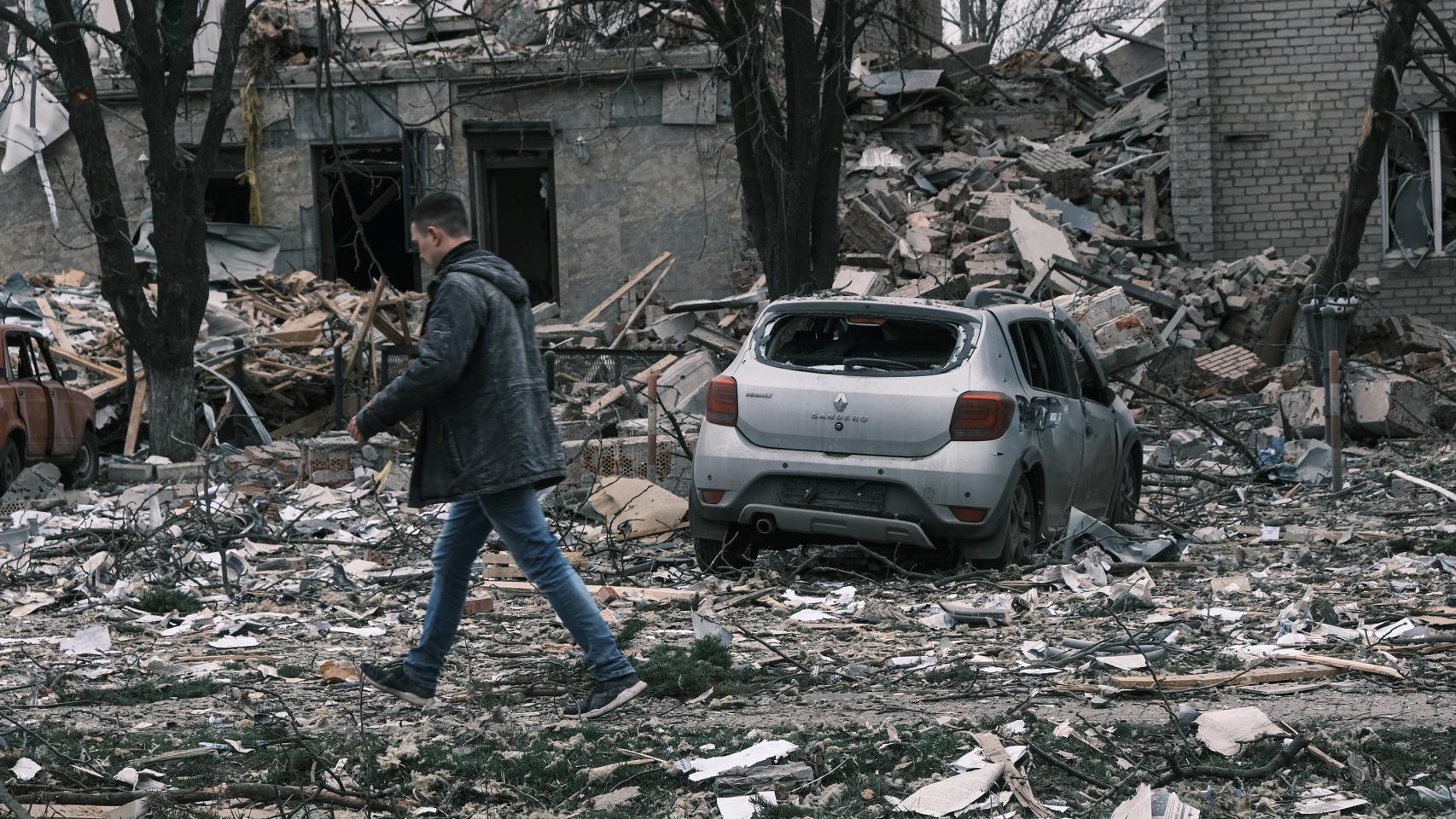
Buildings bombed by the Russian Army this Monday in Sloviansk.
But just over a week ago, the kremlin changed its strategy in the north of Donetsk, where has begun to bombard the most important towns, indiscriminately and on a daily basis. In fact, a few hours before the attack on the Sloviansk Recruitment Center, nearby Kramatorsk was also bombed in the middle of the night.
No truce in Kramatorsk
No less than seven missiles were counted, of which at least two were shot down by the Anti-Aircraft Defense, causing an orange glow in the sky that could be seen throughout the city. It was the sixth consecutive bombing in a week, after the high-profile cluster bomb attack – in broad daylight – that killed two women.
[Dos días (y una noche) en el frente de Vuhledar: la cara más oscura de la guerra en Ucrania]
All the attacks here have occurred in residential areas, apartment buildings, schools and parks.as well as in industrial zones, which at the moment hardly have any activity.
Of the 150,000 people who resided in Kramatorsk before the Russian invasion, less than half remain – and that’s counting internally displaced persons who have arrived from places like Bakhmut, Liman or Chasiv Yar. But if the shelling continues at this rate, evacuations to safer places will most likely increase.
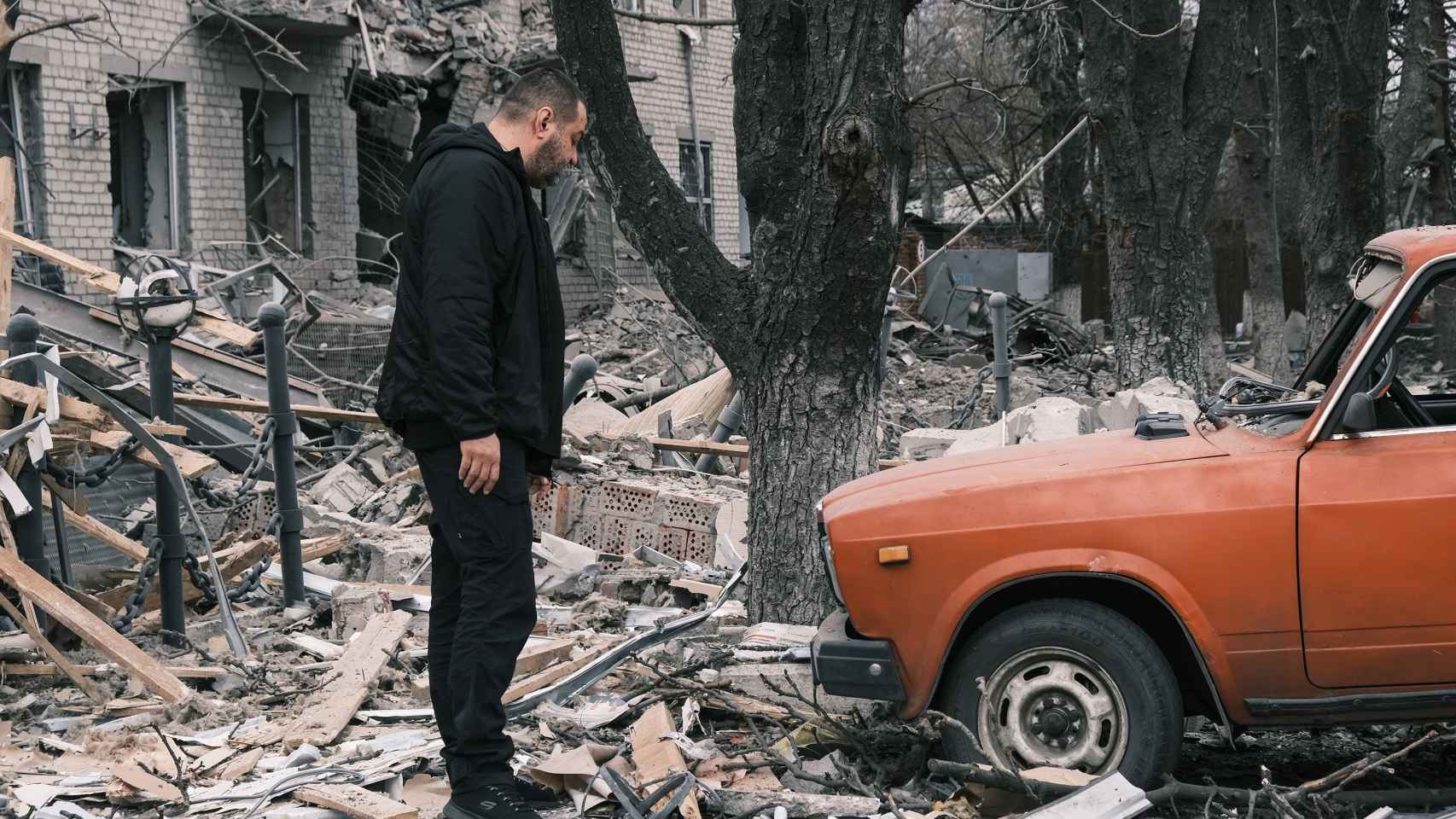
A man looks at one of the vehicles that were parked in front of the bombed-out building in Sloviansk on Monday. The rubble that has fallen on the windshield and the hood have destroyed it.
The towns of Konstantinivka and Druzhkivka were also targeted by Russian bombs, which on Monday did not give truce in this area of Donbas. The day to day here has become a constant wait, not knowing when and where the next projectile will fall, while the anti-aircraft sirens do not stop sounding.











